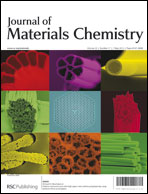Role of chelate complexes in densification of CuInSe2 (CIS) thin film prepared from amorphous Cu–In–Se nanoparticle precursors
Abstract
CuInSe2 (CIS) absorber layers for thin film solar cells were fabricated via a non-vacuum route using amorphous Cu–In–Se


 Please wait while we load your content...
Please wait while we load your content...